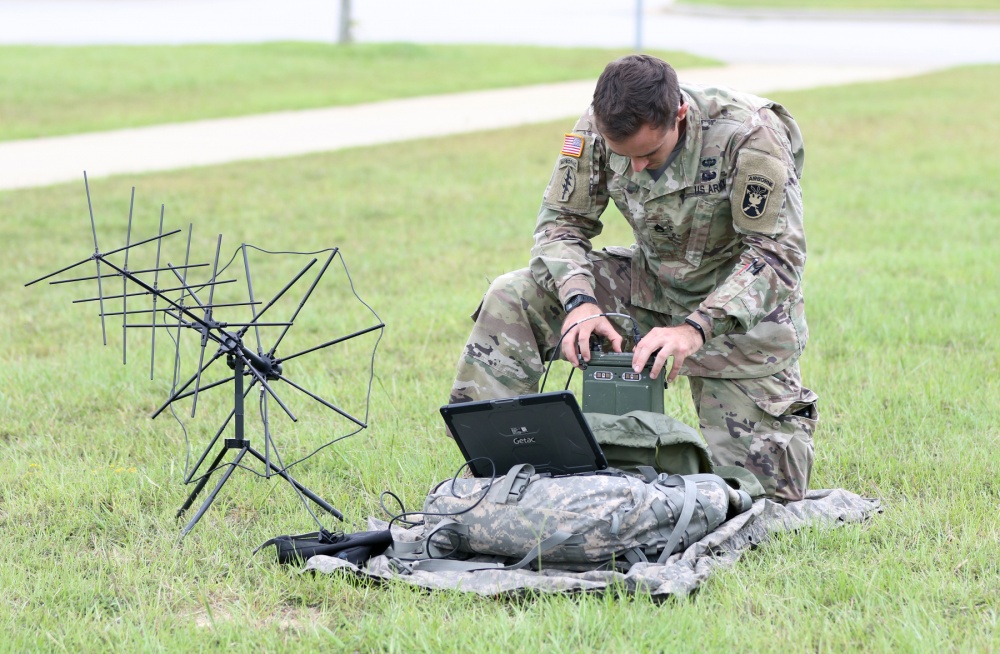The network increasingly underlies all aspects of the modern battlespace. Whether it’s because strategic concerns require forces to be more distributed or the increasing complexity of naval systems, it’s undeniable that innovative ways of getting data to the edge are of paramount importance.
The Army is no exception – especially with the introduction of the IVAS system. This new system has the ability to immerse deployed soldiers in a bevy of data – from targeting information, navigational waypoints, or augmented reality inputs. The network that delivers the IVAS systems will be a key factor in achieving overmatch in land warfare in the near future.
The problem is, the U.S. Army is often deployed across the world, and many of those locations either don’t have available terrestrial networks, or the networks that exist are denied or untrustworthy. This means the Army often lacks the trusted communications infrastructure necessary to power next generation applications. For these reasons, alternative means of connectivity in austere environments need to be considered as part of Army modernization initiatives.
Case in point, during the recent annual meeting of the Association of the U.S. Army (AUSA), Major General Peter Gallagher, who is leading the Army’s drive to modernize its network infrastructure, shared a clear example why high-throughput MEO satellites need to be part of that solution. “When I was at CENTCOM, we were selecting middle-earth orbit satellite constellations for certain heavy demand data exfil requirements from northern Iraq and Syria where we had to get a lot of data off target and transmit back. We didn’t have access to fiber optic cable, so we leveraged commercial MEO constellations.”
Commercial operators have put the infrastructure in place, have proved it out, and are utilizing that capability across the globe.
This is the beauty of MEO satellite constellations like O3b mPOWER. Critical advancements in commercial satellite technology make it possible to beam incredible amounts of data to anywhere in the world, and that opens up previously inconceivable capabilities: live, 4K HD video; 3D printing in-theater; and real-time augmented reality to name a few, all without the latency associated with constellations in higher, geostationary orbit.
As we see in Maj. Gen. Gallagher’s example, this capability is already a boon to warfighters and is already being deployed in one of today’s most crucial conflict zones. And it’s only going to be more important that the military can provide that level of network connectivity the world over.
When talking about how the force of the future will operate and laying out the roadmap for Army modernization, Lieutenant General Stephen Fogarty, the commander of U.S. Army Cyber Command (ARCYBER), made it clear that “the network is the foundational weapons system.”
That’s because so many of the most exciting capabilities that will come out of Army modernization and that will grant the individual soldier unprecedented amounts of intelligence, surveillance, and reconnaissance (ISR) data – such as unmanned combat vehicles and helicopter-launched drones – need to send and receive huge amounts of data in real time order to be effective. Before their data can be delivered to soldiers on the move, the personnel controlling these remote platforms need to retain control and literally keep them flying, and the drones themselves need to offload the incredible amount of ISR data that their ever-increasing number of sensors are picking up.
As SES Space and Defense’s Eric Gunzelman said in a recent interview:
“When you combine the data generated from airframe sensors and the data generated by ISR sensors, it’s easy to see why the amount of bandwidth needed to and from the aircraft has jumped significantly. In fact, I recently read an Avascent industry briefing that showed the total number of UAVs and the total data rate from those UAVs will both double between 2015 and 2025. That’s going to require a lot more bandwidth.”
This point also highlights an implication of what both Generals Gallagher and Fogharty alluded to in their AUSA remarks. Two of the men entrusted with the task of Army modernization expect the role of network connectivity to grow, which may very well mean that they’ll need more bandwidth than what the current purpose-built, military satellite infrastructure can provide.
That may be a challenge given the process of building and deploying government satellites. Traditionally, the time it takes the military to design, develop, build and launch a new satellite means that, by the time they launch a new satellite, the technologies on it are no longer cutting edge.
By contrast, commercial satellite operators are constantly launching new satellites and replacing their older constellations, so the volume of satellites they’re launching simply gives them more of an opportunity to deploy breakthrough technology than what the government can do by its own devices.
Consequently, if the government takes advantage of this satellite renaissance, it may mean more secure bandwidth and less latency at a faster rate.
So, as cases like the one Maj. Gen. Gallagher described continue to arise, making use of already-trusted, still-expanding commercial resources like high throughput MEO satellite constellations may be one more way that our military can guarantee its technical overmatch against any potential adversary.
